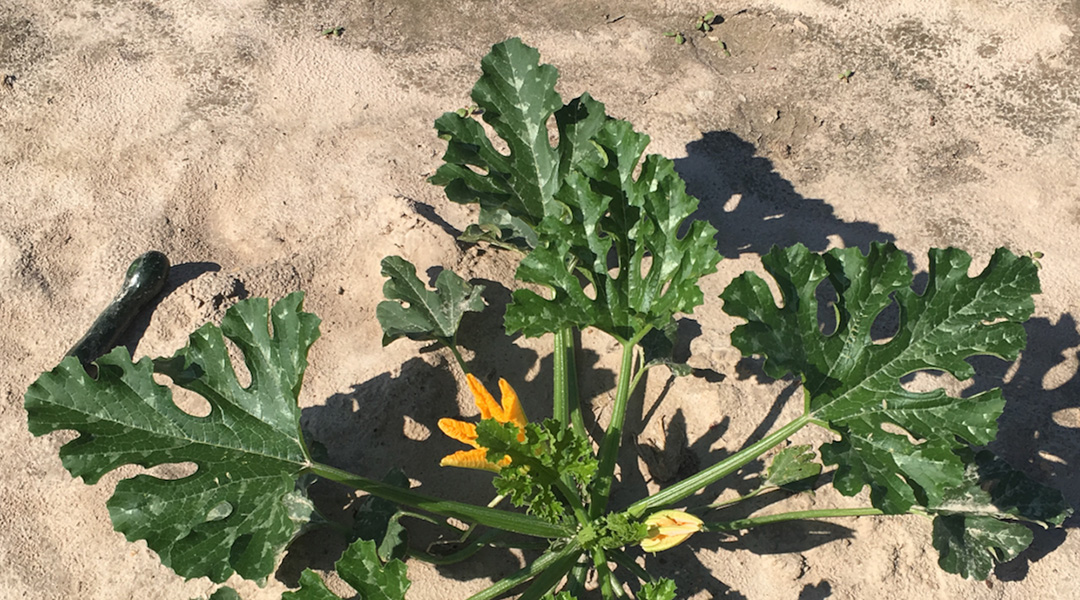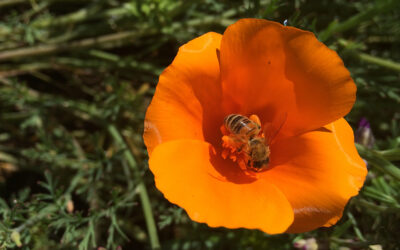Feeding on squash plants underground, striped cucumber beetle larvae promote resistance to adult squash bugs in neighboring plants. Both above and below the ground, plants communicate danger through a bouquet of chemicals.
When wounded, plants release a variety of chemicals, specific to the damage, from the injured part or elsewhere in their form. “Freshly cut grass produces a different smell relative to an unmowed lawn, as cutting and damaging the grass induces these plants to emit specific chemicals,” Morgan Thompson, first author on the study and a graduate student at Texas A&M University, College Station, in the United States, wrote in an email.
When an insect nibbles on a plant, it releases chemical cues to pass on a critical warning to its neighboring plants. These signaling molecules help neighbors shore up their defenses as well as attract natural enemies of the attacking insects.
In previous research, Thompson and colleagues found that squash plants release chemicals from their leaves when striped cucumber beetle larvae feed on their roots. “We wondered if neighboring plants could detect these changes in chemical cues,” said Thompson.
For their experiments, the researchers focused on squash plants and two species of insects: striped cucumber beetles and squash bugs. While striped cucumber beetles feed as larvae underground and as adults above ground, squash bugs feed aboveground through their whole life cycle.
To begin with, the team characterized the chemicals squash plants released aboveground when striped cucumber beetle larvae fed on its roots. Both damaged and undamaged plants released six different chemicals. But levels of one specific chemical, called (E)‐β‐ocimene, changed when the squash plant’s roots were ravaged by insects.
“Since (E)‐β‐ocimene was the only chemical drastically changing in response to belowground herbivory, we decided to test the effect of (E)‐β‐ocimene alone on squash plants,” said Thompson.
So, the researchers conducted a series of plant communication experiments in the lab. They expected that insect attacks belowground would lead squash plants to release chemical cues aboveground from their leaves. This, in turn, would make neighboring squash plants better prepared to handle attacks from both kinds of insects.
For these experiments, they exposed “receiver” plants to “emitter plants.” The emitter plant was either an undamaged plant or one that had been chewed belowground. In two separate experiments, the receiver plants were then exposed to either the adult bug or beetle aboveground. Squash bugs that fed on receiver plants gained less mass compared to those that fed on control plants. Surprisingly, neighboring plants did not grow resistant to adult beetles.
“Overall, we found that ‘receivers’ exposed to root-damaged ’emitter’ plants were more resistant to aboveground bugs, but not beetles,” said Thompson. Why this happens, is as yet, unclear.
One possible explanation could be that squash plants are often attacked simultaneously by both species. So, a chemical warning about a beetle larva’s attack could also be a sign of an imminent squash bug attack, the researchers speculated. On the other hand, the beetle larvae may exploit these chemical signals to rule out competition from adult squash bugs, while letting plants be receptive to their adult forms.
With the aid of synthetic (E)‐β‐ocimene dispensers, the researchers found that direct application of the chemical alone could cause similar resistance to squash bugs in exposed plants. When squash bugs attempted to feed on plants exposed to ocimene, they gained less weight compared to bugs that fed on control plants. Further, plants exposed to ocimene had more puncture wounds from the bugs than the controls.
Since these results were identified in a lab setting, more research is needed in the real world to verify these chemical-driven interactions between plants and insects. Furthermore, such plant chemicals could offer a natural alternative to artificial pest control employed by farmers.
“If we can continue to identify the ecological functions of plant chemical cues, this opens the door for a number of different ways to deploy and utilize these chemicals to better manage our agricultural crops,” added Thompson.
Reference: Anjel M. Helms, et al., Belowground insect herbivory induces systemic volatile emissions that strengthen neighbouring plant resistance aboveground, Plant, Cell & Environment (2023). DOI: 10.1111/pce.14762
Feature image credit: Morgan Thompson on Unsplash

















